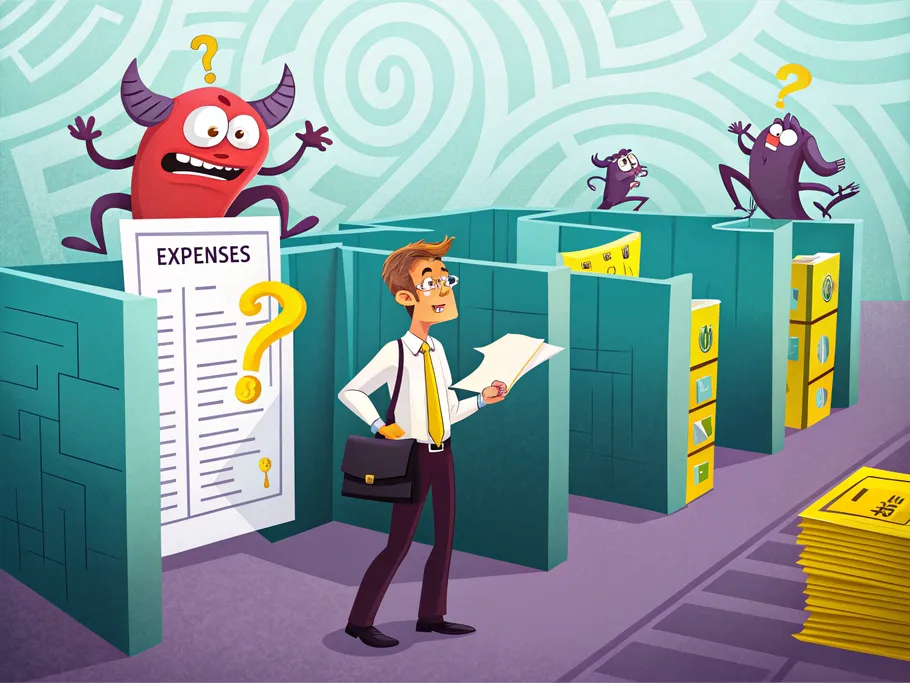Ah, expenses—the relentless little gremlins that feast on your hard-earned revenue like it’s an all-you-can-eat buffet. You hustle, make sales, and maybe even start planning that dream vacation. Then bam! Along come the expenses, kicking down the door and emptying your pockets.
But here’s the million-dollar question (or maybe just a $19.99 question): Where do these sneaky cash-draining vampires actually show up in your financial statements? Are they assets, liabilities, or equity? Spoiler alert: They’re none of the above.
So grab a coffee (or something stronger—we don’t judge), and let’s dive into the surprisingly not-boring world of expenses, assets, liabilities, and equity. Think of this as the financial savvy class you wish you’d had in school—minus the monotone professor and the overpriced textbook. We’re keeping the jargon to a minimum and the sarcasm to a maximum. Let’s roll!
What Are Expenses, Assets, Liabilities, and Equity in Accounting?
Before we track down where expenses are lurking, let’s meet the main cast of our financial statement saga:
- Assets
- Liabilities
- Equity
- Revenue
- Expenses
Assets, liabilities, and equity love to hang out on the balance sheet. Think of them as the VIPs at the financial party—showcasing what your company owns, what it owes, and what’s left over for you (that’s equity) after settling all the tabs.
Revenue and expenses, meanwhile, are the drama queens of the income statement. They’re all about performance—revealing whether your business is rolling in dough or barely scraping by. Understanding the difference between the balance sheet vs income statement is key to mastering your financial statements.
Expenses: The Necessary Evil of Doing Business
Let’s be honest—expenses are like that friend who always shows up uninvited and eats all your snacks. Annoying? Absolutely. Necessary? Unfortunately, yes. After all, you gotta spend money to make money, right?

Expenses are the costs you rack up just trying to keep your business breathing. We’re talking:
- Payments to suppliers for those fancy widgets or services you sell
- Employee wages (because apparently, “working for free” isn’t a thing)
- Office rent (that cozy workspace isn’t going to pay for itself)
- Marketing and advertising (because someone has to see those hilarious TikToks you made)
- Equipment depreciation (since your laptops don’t age like fine wine)
Expenses come in various flavors—known as types of expenses in accounting. These include:
Operating expenses: Day-to-day costs like rent, utilities, and salaries.
Cost of goods sold (COGS): Direct costs of producing the products or services you sell.
Non-operating expenses: Costs not related to core business operations, like interest payments.
Understanding these different categories helps with accurate expense classification and gives you better insight into where your money is going.
In the grand theater of accounting, expenses are subtracted from revenue to reveal your net profit—or net loss if you’re in a particularly tragic act. They make their grand appearance on the income statement, not the balance sheet where assets, liabilities, and equity hobnob. So, to set the record straight: expenses aren’t assets, liabilities, or equity. They’re the necessary gremlins chipping away at your profits on the income statement.
Wait, Aren’t Expenses Assets?
Short answer: Nope. Not even close.
Assets are the shining stars in your business universe—the resources that provide future economic benefits. Think of them as the cash cows, the gift that keeps on giving. We’re talking about:
Cash (the undisputed king of assets 😉)
Inventory (all those products piling up in your warehouse, waiting to make you money)
Property and equipment (your snazzy office space and fancy gadgets)
Accounts receivable (money customers owe you—looking at you, late-paying clients)
Assets are like the golden geese of your company—they help you generate revenue over time. Expenses, on the other hand, are more like the tolls you pay to keep those assets working for you. They’re the costs of using up resources to earn that precious revenue.
Example Time: Suppose you invest in a delivery van (an asset). Over time, you shell out cash for gas, maintenance, and maybe even a speeding ticket or two (expenses). The van helps you deliver products to customers (generate revenue), while the expenses are the costs of keeping it on the road and avoiding the impound lot.

Are Expenses Liabilities Then?
Good guess, but still a miss.
Liabilities are the debts and obligations your business owes to others. They’re like the financial IOUs scribbled on the back of a napkin. Common examples include:
Loans payable (because the bank expects to be paid back—go figure)
Accounts payable (money you owe suppliers for goods or services)
Wages payable (what you owe your employees but haven’t dished out yet)
Unearned revenue (money you’ve received for services you still need to deliver—time to get cracking!)
While expenses can sometimes create liabilities (like when you receive a bill and haven’t paid it yet), they’re not the same thing. Expenses are the costs incurred to run your business. Liabilities are the obligations to pay money to others in the future.
Example: Suppose you get an invoice for $500 worth of office supplies but haven’t paid it yet. That’s a liability called accounts payable. When you finally part with your cash to pay the invoice, it becomes an expense.
Surely, Expenses Must Be Equity?
Third time’s the charm? Sorry, but no dice.
Equity is your slice of the business pie after paying off all your debts. It’s the owner’s stake—the leftovers after everyone else has taken their share. Equity is what makes your business yours. It includes:
Contributed capital (money you or your investors have pumped into the business)
Retained earnings (profits you’ve decided to reinvest instead of splurging on a yacht)
Common stock (if you’re operating under a corporate structure)
Here’s the kicker: Expenses actually reduce equity. Every time you rack up an expense, it nibbles away at your retained earnings. Picture a financial Pac-Man, chomping down on your equity every time you pay a bill.
What are Expenses?
So, here’s the deal: Expenses are the costs of doing business—the outflow of resources you use to generate revenue. They live on the income statement, showing how much it cost to run your operation over a specific period.
On the flip side, assets, liabilities, and equity are snapshots of your company’s financial position at a single point in time, proudly displayed on the balance sheet.
The Key Differences:
Assets: What you own—resources with future economic benefits
Liabilities: What you owe—obligations to outsiders
Equity: What’s left for you—assets minus liabilities
Expenses: The costs of running the show—recorded over a period of time on the income statement
So while expenses definitely affect assets, liabilities, and equity (like a mischievous ghost causing trouble behind the scenes), they aren’t classified as any of them. They’re in their own category—party crashers of your financial statements.
How Expenses Flow Through Financial Statements

Even though expenses don’t get a seat at the balance sheet table, they love to stir up trouble behind the scenes. Here’s how they make their presence felt:
Paying an expense in cash? Your cash (an asset) decreases, waving goodbye to your hard-earned money.
Incur an expense but haven’t paid it yet? Your accounts payable (a liability) increases. You’re now on the hook to pay up.
Recording expenses? They reduce your retained earnings, which is part of equity. More expenses = less equity.
For Example:
You pay $1,000 for office rent. Your cash (asset) decreases by $1,000, and rent expense increases by $1,000 on the income statement.
You receive a $500 utility bill but haven’t paid it yet. Utilities expense increases by $500, and accounts payable (liability) increases by $500.
See how expenses create ripples through your financial statements, like tossing a stone into a still pond? They may be unseen on the balance sheet, but their impact is undeniable.
A place for Expenses
Expenses have their own VIP lounge on the income statement, hobnobbing with revenue, gains, and losses. They’re part of what’s called temporary accounts because they capture financial activity over a specific period and then reset to zero when the next period rolls around—like a financial Etch A Sketch.
Temporary Accounts Include:
Revenue Accounts: Track income earned during the period
Expense Accounts: Track costs incurred during the period
Gain and Loss Accounts: Record non-operational profits and losses (like selling off old equipment for a profit)

At the end of the accounting period, these accounts get closed out and their balances are transferred to retained earnings (part of equity). This keeps your financial statements tidy and ensures that you can measure each period’s performance separately. It’s like starting each new season with a clean scoreboard.
Wrapping It Up
So there you have it—expenses are the unsung heroes (or perhaps the villains) of your financial narrative. They play a crucial role in measuring your company’s profitability but don’t quite fit into the boxes labeled assets, liabilities, or equity. Instead, they march to the beat of their own drum on the income statement, all while subtly influencing the balance sheet from behind the curtain.
Understanding where expenses fit into your financial statements isn’t just an academic exercise—it’s essential for making savvy business decisions, keeping your expense classification straight, and avoiding fiscal surprises.
Takeaways
Expenses are the costs incurred to generate revenue, recorded on the income statement.
They are not assets (resources providing future economic benefits).
They are not liabilities (debts or obligations to others).
They are not equity (your ownership interest in the business).
Expenses decrease net income, which reduces retained earnings, leading to a decrease in equity.
Expenses can affect assets and liabilities indirectly through transactions—like decreasing cash (an asset) or increasing accounts payable (a liability).
Understanding where expenses fit in your financial statement components helps you make smarter business decisions, maintain accurate expense classification, and avoid unwelcome financial surprises.
Now that you’re armed with this knowledge, you can impress your accountant, dazzle your investors, or at least hold your own in a conversation about the difference between expenses and liabilities (or the difference between expenses and assets). Remember, while expenses might seem like the villains of your financial story, they’re just part of the journey. Keep them in check, and your bottom line will thank you.
